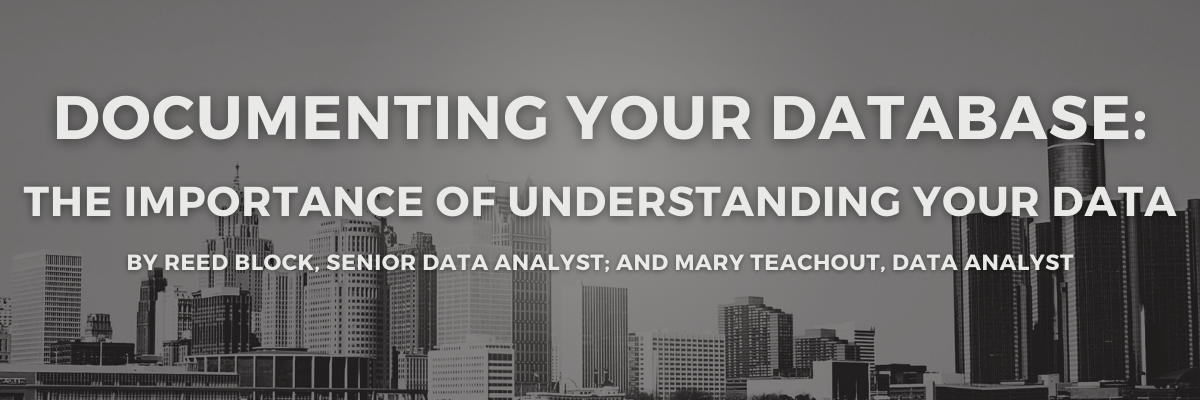
By Reed Block, Senior Data Analyst; and Mary Teachout, Data Analyst
As the saying goes, “Knowledge is power;” knowing how to understand your data empowers you to make smart, data-driven business decisions. In our daily jobs, we develop knowledge in several ways –including through coworkers, Google or happy mistakes. However, true knowledge goes beyond reactionary error resolution.
Having knowledge of the jobs that extract, transfer and load your data establishes the foundation of understanding how your data is governed and flows to your intended audience. Ensuring those users have the necessary access and privileges enhances data adoption and usage. You can do your best to prepare and anticipate all of the things that can go wrong, but knowing how to troubleshoot errors is crucial to keeping your environment safe, secure and accurate.
The best way to standardize this knowledge is through documentation of your data and your database infrastructure. By doing so, you will set yourself and your team up for success by preventing knowledge gaps and promoting consistency as your team grows and evolves. Use the following best practices to get started with or expand your repository of data documentation:
- Use a template – Create an outline for database objects, data types, formats, business rules, logic, use cases, and much more. Documenting everything in the same format will make it easier to review and understand. Also, store everything in the same place with the same naming convention so it can be found quickly and easily.
- Document as you go – While it may seem like writing things down as they happen extends resolution or completion in the short term, the long-term benefits are worth it. This will help you avoid forgetting key details that may impact your database or reports down the road.
- Continuous review – Take time on a recurring basis to review your documentation. This will give you the opportunity to add new key information or remove outdated information. It will also give you the opportunity to evaluate your processes and improve them if efficiencies have been identified since the last review.
We understand the importance of documentation, which is why the Data Analytics team at MDT has started expanding the materials on ARCU within the Compass Knowledge Base. Here you can find information on GL balancing, user management, and much more. Each article also references the many guides Jack Henry has published, all available within your ARCU Portal.
We know that we’ve only scratched the surface, but we are excited to share with you some of the new articles for you to utilize. To stay in the know, find the Data Analytics page in Compass and click “Follow” to be notified when more articles are published!
If you are still craving more ARCU knowledge after working through our newly expanded Knowledge Base area, come see us at MDT’s E3 Conference in May for our session titled, “What’s New in ARCU.”




